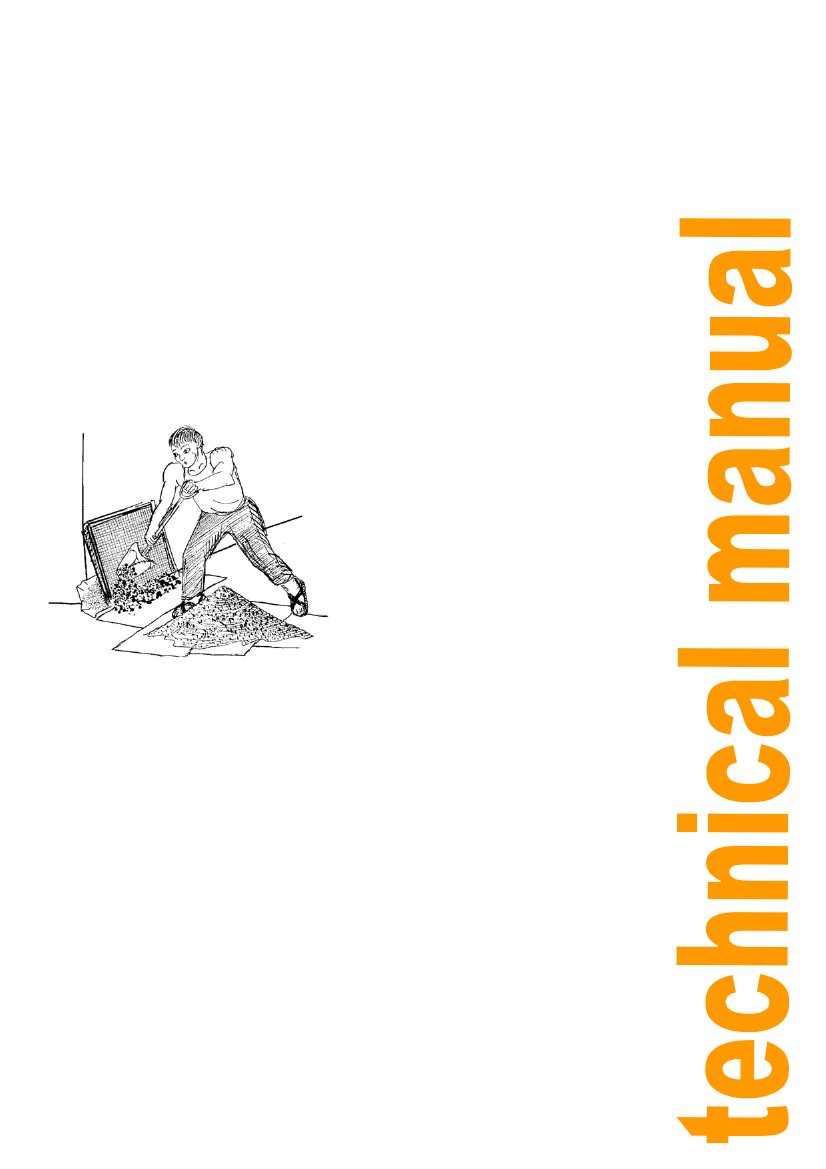
Slow sand filtration water treatment plants
Practical Action
Operation of the slow sand filter with filter-harrowing cleaning
Preparing the sand bed
It is important to eliminate the finest and thickest grains of sand. This will maintain good
porosity in the bed without affecting the successful elimination of bacteria and viruses. The
sand must be free of any clay or organic matter.
To prepare the sand it must be sifted as follows: place the fixed sifter at a 45% angle. With
a spade, forcefully throw the sand at it. The sand should be completely dry during this task.
(Cánepa 1988).
The steps are as follows:
1) Sift the sand through a sifter with 2.54cm (1”) holes to eliminate pieces of
wood, stones, etc.
2) Sift the sand through a sifter with
1.588cm (5/8”) holes to retain
thick sand.
3) Sift the sand through a 0.635cm.
(1/4”) and 0.317cm. (1/8”) sifter
to eliminate sand that is too fine.
4) Wash the sand to remove the clay
and organic matter adhered to the
grains of sand, following the same
procedure as for washing gravel.
A total of eight people are required for the
sifting operation.
• Start-up
The idea is to fill the two filters with an ascending flow, in order to avoid the accumulation of
air bubbles.
1) Check the filter valves to make sure they are shut.
2) Fill the first filter through the top, opening both the inlet valve (F1) and the
outlet valve (SF1).
3) Whilst the first filter is filling up, close the inlet valve of the reservoir (IR) and
open the outlet valve of the second filter (SF2) so that the water treated in the
first filter enters through the bottom of the second filter. Filling the second filter
with an ascending flow eliminates the air bubbles accumulated in the sand bed.
4) When the water in the second filter reaches a level of 10cm above the sand bed,
open the inlet valve (IF2) and close the inlet valve of the first filter (IF1).
5) Open the cleaning valve at the bottom of the first filter which was filled through
the top, in order to drain it completely.
6) When the first filter is empty, close the drainage valve and let the water treated
in the second filter enter the first filter though the bottom, filling it up to
between 10 and 20cm above the sand bed.
22